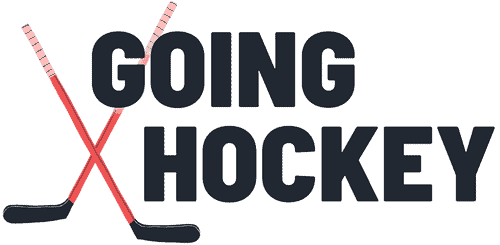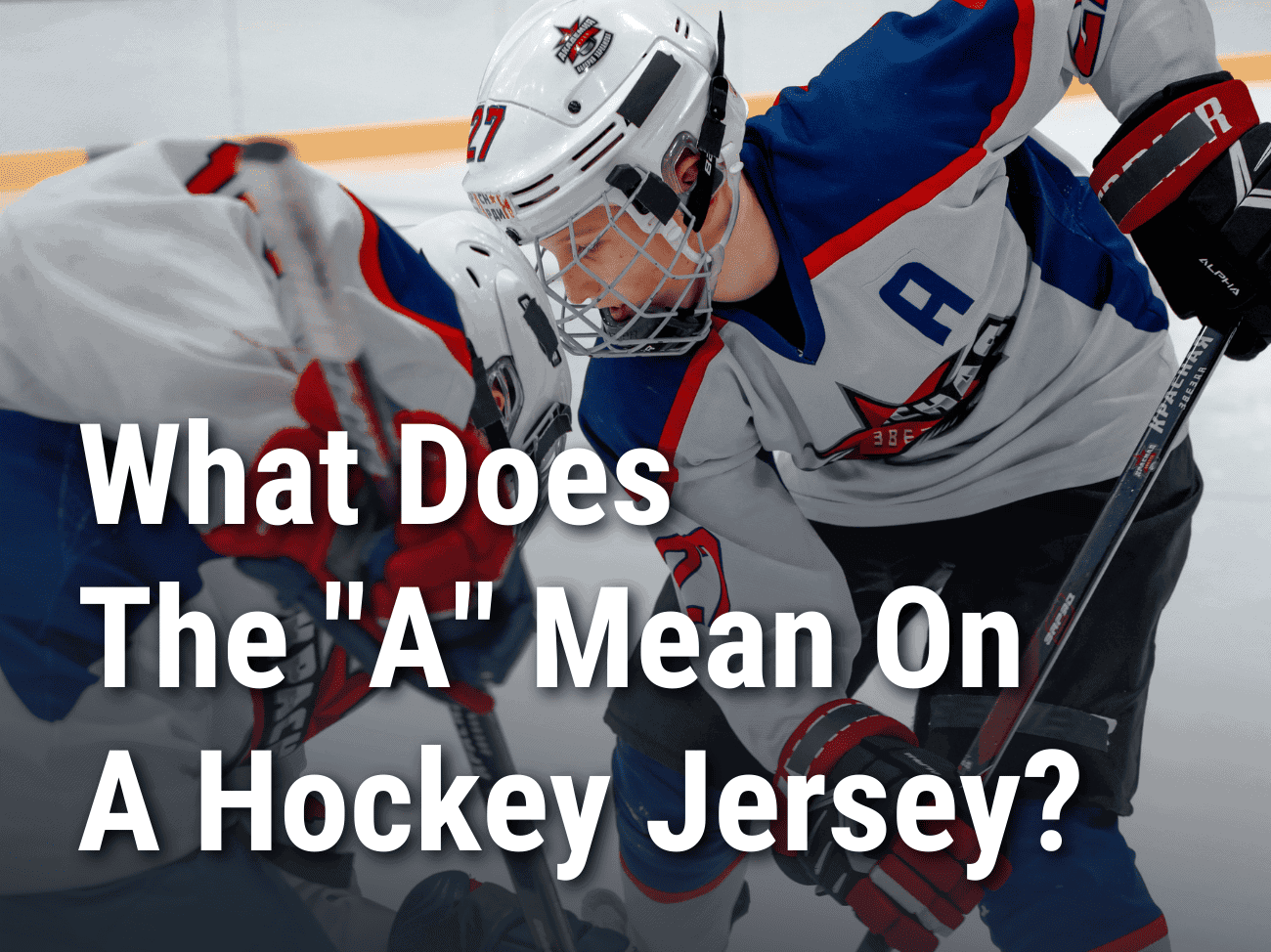In the world of hockey, the iconic jerseys donned by players carry more significance than just identifying their team and representing their colors. While the team logo and number are obvious focal points, one letter often stands out prominently on certain players’ chests: the letter ‘A.’
What does the “A” mean on a hockey jersey?
The “A” on a hockey jersey stands for “alternate captain.” However, “alternate captains” are more commonly referred to as “assistant captains.”
Table of Contents
ToggleWhat Does The “A” Mean On A Hockey Jersey?
The “A” in hockey stands officially stands for “alternate captain.” However, they are more commonly referred to as “assistant captains.”
Each team has one captain – that is, one player wearing the “C” on the team. In addition to the one captain, the team has two alternate captains, which is what the “A” stands for.
Among league officials and announcers the term “alternate captain” is used frequently, but among hockey players themselves, the term sounds somewhat stiff and formal.
Instead, most hockey players use the term “assistant captain”, signifying that the “alternate captains” are indeed still “captains.”
Captains on hockey teams are sometimes chosen by coaches, especially on younger teams. But as teams get older, the coaches will usually delegate that responsibility to the players.
Meaning, on most teams, the players will vote for captains themselves, like in a democratic election. Usually, players will write down the three names of players who they believe would be good captains on the team, regardless of the “alternate” captain or “captain” captain designation.
The votes will then be tallied up, usually by the coach, and the player with the most votes will become the “captain”, with a “C” on their jersey. And the runner-up, and runner-up runner-up, will be “assistant captains” with an “A” on their jerseys.
What Does An Assistant Captain Do?
The roles and responsibilities of an assistant captain largely depend on the type of captain they are.
There are different ways to lead on a team, and no way is really better than another. It depends on what the team needs. Some ways of leadership include:
- Staying focussed
- Scoring points
- Being Vocal
- Veteran presence
- Fighting players
Staying Focussed
Some assistant captains lead by staying focussed. This is more of a personality trait of the individual than a tactic, but it’s a style of leadership nonetheless.
A good example of a captain who led by focus was Jonathan Toews, affectionately known by the fans and players as “Captain Serious.”
Sometimes it’s hard for a team to “get in the zone” or “get on the same page” before a game. Maybe your team just got back from a long holiday, or maybe your teammate got engaged and everyone’s happy for him – really anything can throw your team’s focus off.
Sometimes the whole atmosphere of a team will be that of lackadaisical distraction. And that’s when a focused captain can get the team on the right page.
It’s hard to joke around in warmups when you see your captain staring you down with the fire of thousand suns.
Focussed captains help get their teams focused, which in turn helps the team win games.
Scoring Points
Some captains lead less with the virtue of their character, and more by their talent and ability.
Assistant captains who lead by scoring points show up in big moments in big games. They are someone who can’t necessarily count on for stellar character or fantastic speeches, but when your team needs a goal they’re there to score it.
A good example of a captain who led by scoring was Patrick Kane. Off the ice, he seemed to be somewhat laid back and individualistic.
But on the ice, he was all business, doing everything he could to score points for his team, often in clutch situations.
In the 2010 Stanley Cup Finals, Kane scored the overtime goal against Philadelphia, to give Chicago their first Stanley Cup in 49 years.
Being Vocal
Some assistant captains lead by being vocal. They tell their teammates to keep their heads up and give words of motivation when needed.
When teams are getting destroyed, they tend to go silent. There isn’t much talking on the bench. That’s when you need a vocal captain to step up and say, “LET’S GO BOYS, WE F*$@IN’ GOT THIS!!”
A funny example of a vocal captain is Gord Ogilvey from the movie “Goon.” Although Gord is a washed-up veteran on a washed-up team, he still tries his best to get his team going with his words.
Veteran Presence
Some assistant captains help their teams just by “being a veteran.” They are able to keep a cool head and remain calm in intense situations – because they’ve been through it all before.
It’s likely nerve-racking when you’re a rookie player heading into your first playoff game against Tavares, Matthews, Reeves, Giordano, etc, in Scotiabank Arena in Toronto. Tensions are probably high and you have no idea what to expect.
That’s when it helps to hear your veteran teammate say “It’s just another game.”
Even if they say nothing at all, veterans are usually calm and collected in all situations, which also helps them remain calm and collected.
A good example of a veteran captain is Cal Clutterbuck. He’s played ~1000 NHL games and over 75 playoff games in his career.
Fighting Players
Some assistant captains choose to lead by being a physical presence on the ice.
It happens sometimes that your team is tired and sluggish. Maybe you guys have been on the road for a few games, maybe the team bus broke down, you guys didn’t sleep well, etc.
You start the game and the home team comes out flying, laying hit after hit. They’re finishing every hit, winning every corner battle, are dominating the game.
Everyone’s tired, and team morale is low.
That’s when a “fighting captain” decided to drop the gloves against an opponent at center ice. The whole team jumps up. Everyone’s leaning over the boards as they watch him pummel the opponent to the ice.
After the fight, the captain throws his arms up and gives a, “let’s go boys!” while heading to the penalty box.
Suddenly, the team is buzzing with energy.
Sometimes teams need a physical player to start a fight or lay a crushing hit in order to get things going.


Leave a Reply